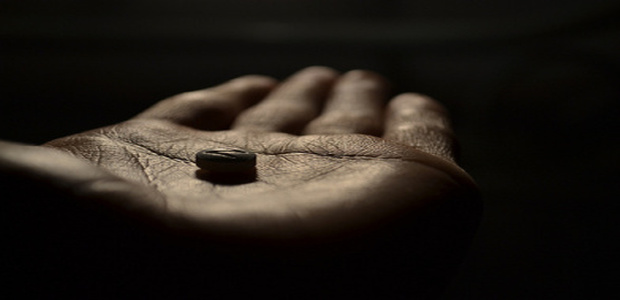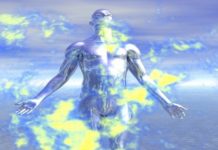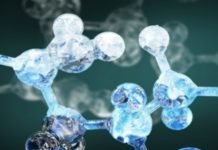In the previous post, we have looked into the origins of placebo effect and some of the successful case studies. Placebos also seem to work on a subjective level in non-psychiatric conditions, such as asthma. In a 2011 study Kaptchuk, Kirsch and their colleagues gave 46 volunteers with asthma either an inhaler with a drug (albuterol), an inhaler with saline, sham acupuncture or nothing. During each of 12 visits, researchers measured how much air the patients could inhale and exhale, both before and after treatment.
The respiratory scores of those treated with albuterol rose by 20 percent, whereas all the others got just a 7 percent bump, suggesting the placebos had no effect. But when the researchers asked the asthma sufferers to rank their respiratory discomfort on a scale of 0 to 10, everyone except those who got no treatment reported a 50 percent improvement. Even though the drug was causing a “robust” medical effect, as compared with the placebo, patients could not reliably detect the difference. Perhaps the placebo activates a mechanism that is distinct from the pharmaceutical’s targeted pathway but, in some respects, is equally effective. According to Harvard psychologist Irving Kirsch, “A medical treatment has two components: the actual pharmacological effect and the placebo component of the active treatment.”
To further unravel that placebo component, neuroscientists have also been mapping the brain’s response. In a pioneering 2002 study psychiatrist Predrag Petrovic of the Karolinska Institute in Sweden and his colleagues investigated the placebo’s brain signature in pain relief, something scientists had previously linked to changes in the body’s endorphin system. Petrovic and his colleagues told nine healthy volunteers that they would be receiving two potent painkillers, but only sometimes did the injection consist of the opioid remifentanil; in other cases, it was saline. Forty seconds after an injection, the team stimulated a subject’s left hand with an electrode that either heated to the point of pain gave off benign warmth or provided no sensation at all. Meanwhile, the researchers scanned subjects’ brains using positron- emission tomography.
Both the opioid and the saline activated a network of brain regions consisting of the brain stem, a seat of the opioid system that mediates pain relief, and the rostral anterior cingulate cortex, which is rich in opioid receptors and part of the body’s reward system. Petrovic proposed that placebos, as with opioids, might be working by triggering cortical areas such as the anterior cingulate that, in turn, exert control over the analgesic systems of the brain stem. In 2004, neuroscientist Tor D. Wager of the University of Colorado at Boulder and his colleagues further dissected the painkilling effect of a placebo using MRI and found that it involved additional brain regions. (The researchers also chose pain because it is easy to manipulate in a scanner.)
The researchers administered a placebo cream while giving people painful shocks or putting intense heat on their forearms. In one experiment, they gave subjects a warning cue, a red “get ready” sign, just before those subjects received the painful stimulus. With that signal, participants expected pain, unless the cream was applied, in which case they expected relief. That expectation of relief first activated a cognitive “executive” center of the brain called the prefrontal cortex. After that, activity in the pain response areas of the brain declined, and subjects reported relief. This temporal pattern of brain activity suggested that placebo pain relief involves an expectation signal from the prefrontal cortex that tells the midbrain to release opioids to meet the expectation of reprieve. “There is a cognitive mechanism driving the opioid system,” says Petrovic, who, in a reanalysis of his 2002 study, also pinpointed regions of the prefrontal cortex as drivers.
The placebo effect seems to involve emotions, too. Wager went on to reanalyze his 2004 data with a computer technique that searches for patterns of brain activity that predict the best placebo responses. Wager and his colleagues reported in 2011 that a robust placebo effect was usually accompanied by changes in activity in regions of the brain that are charged with emotional appraisal, such as the insula, orbitofrontal cortex, and amygdala. This pattern is consistent with what Wager calls “endogenous regulation,” the ability of humans to reinterpret their situation.
In addition to boosting expectations of respite, placebos may somehow give people a better perspective on their predicament. Under the influence of a placebo, Wager speculates, people reevaluate what their pain means, reducing its emotional significance—say, deciding the pain will abate rather than cause persistent disability. During a placebo response, “our brain is likely doing a lot of the work without our real conscious input or even in spite of our conscious desires,” he says. That is, people are unconsciously engaging brain mechanisms that serve to soothe. Surprisingly, that self-soothing process may require focusing on the pain more than thinking about something else.
Wager and his colleagues conducted another study, published in 2012, in which they tried to distract individuals away from experimentally induced pain by giving them another task. But the distraction did not help the participants feel better. Instead, when the researchers coaxed subjects to pay attention to the heat on their arm by asking them to rank its intensity, the subjects experienced greater relief. This outcome is consistent with “acceptance” or “relaxation response” therapies in which people surrender to their pain to better tolerate it. Together these results suggest the placebo response consists of a particular pattern of brain activity that can be differentiated from that triggered by an active medication.
Wager’s team gathered backing for that idea in another study published in 2012. This time, the investigators carefully separated expectation of pain relief from the effects of a medication (remifentanil). The team found that both the drug and expecting to get the drug (but actually receiving a saline placebo) reduced people’s self-reported pain. More important, the expectation component worked via a separate mechanism, increasing activity in the prefrontal cortex and reducing it in emotion areas, whereas drugs influenced the pain- processing brain areas more directly and did so later when levels of remifentanil had a chance to reach their peak in the brain. Given these findings, placebo responses could add to the effectiveness of a painkiller—or a drug for depression, nausea or rheumatoid arthritis.
Such positive results from the case studies really will help boost the growth of the implementation of placebo effect medication in the future.
-end-




































